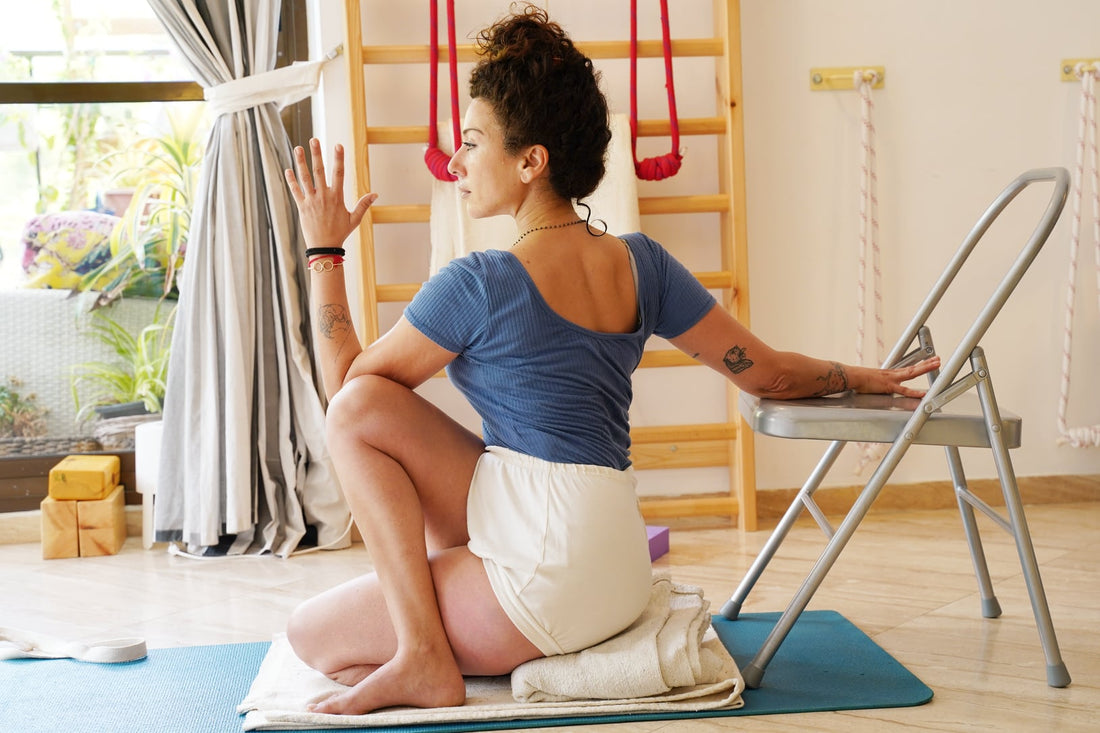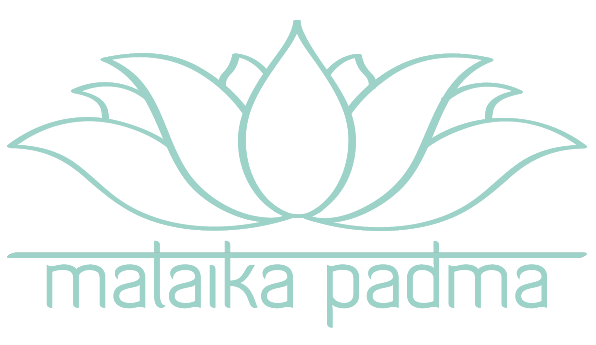
Romi Rolbin: From Recovery to Resilience
In this inspiring interview with Romi Rolblin, we delve into the transformative journey of a dedicated Iyengar Yoga teacher who found healing and empowerment through the practice after a life-altering car accident. From overcoming physical limitations and fear to reclaiming independence, her story highlights the profound impact of yoga on both body and mind. The interview explores her favorite props and poses, the challenges she faced, and the joy they find in teaching others. With a passion for helping students connect with their bodies and a love for the traditional Pune attire, Romi's teacher’s journey is a testament to the resilience and power of yoga

Romi Roblin wearing the color Walk on the Beach
”I used a wheelchair for more than six months and needed assistance with simple tasks… Iyengar Yoga had a transformative effect. It gave me emotional and psychological support as well as aided with my physical rehabilitation.”
How did yoga find its way into your life, and what motivated you to become a teacher?
After a year-long hospital stay resulting from a serious car accident, my path with Iyengar Yoga—started. I used a wheelchair for more than six months and needed assistance with simple tasks such as restroom use and showering. Losing my independence was very challenging.
Once I completed intensive rehabilitation, I was determined to find ways to help myself without relying on caregivers. I wanted to engage in an activity that wasn’t necessarily aimed at people with disabilities. That’s when I discovered Iyengar Yoga’s back and joint classes, which were perfect for my condition at the time.
For me, Iyengar Yoga had a transformative effect. It gave me emotional and psychological support as well as aided with my physical rehabilitation. This great influence motivated me to explore the technique further. I finally became a certified Iyengar Yoga teacher.
My journey has been about reclaiming my independence and sharing the healing power of yoga with others, guiding them on their paths to recovery and well-being.
Tell me more about how Iyengar Yoga impacted your physical and mental health
Physically, Iyengar yoga played a critical role in my recovery. The structured and therapeutic approach of Iyengar Yoga helped me regain strength, flexibility, and mobility, which were essential in reclaiming my independence.
The mental and emotional impact of Iyenagr yoga was significant. The practice taught me patience, perseverance, and the importance of mindful living. Through regular practice, I learned how to manage pain, reduce stress, and cultivate a sense of inner peace and balance.
Yoga also provided me with a supportive community and a sense of belonging. The connections I made with fellow practitioners and teachers enriched my life and offered a network of encouragement and support.
What is your favorite prop and why?
My favorite prop to use in my practice is definitely the chair. I find it to be an incredibly versatile tool that assists in executing a wide range of poses, from complex and challenging ones to more foundational postures. The chair is particularly useful in supporting inverted poses such as Sarvangasana (Shoulder Stand), Halasana (Plow Pose), and Sirsasana (Headstand).
It also proves invaluable in performing standing poses and backward extension asanas, where maintaining balance and proper alignment can be particularly challenging. The chair not only aids in achieving these poses more safely but also enhances the alignment and effectiveness of each posture.
Another great advantage of using a chair is its accessibility; it's a prop that's readily available in any home, making it easy for practitioners to incorporate into their daily practice regardless of where they are. This accessibility helps in maintaining a consistent practice which is crucial for progress in yoga.

Romi Roblin Wearing the color Illusion
“The chair not only aids in achieving these poses more safely but also enhances the alignment and effectiveness of each posture."
And what is your favorite pose?
Adho Mukha Svanasana, or Downward-Facing Dog, holds a special place in my heart and practice. It's a pose familiar to almost every yoga practitioner, yet its complexity and depth never cease to amaze me. Each element of the pose—from the movement of the shoulder girdle, the outward rotation of the arms, to the engagement of the calves and feet—offers a unique challenge and opportunity for exploration.
What truly captivates me about Adho Mukha Svanasana is the myriad ways it can be adapted using different props. Each variation brings a new dimension to the pose, shining a light on different aspects that might otherwise go unnoticed. This versatility makes it a lifelong study in itself, always revealing something new to even the most seasoned yogis.
Its symmetry and balance make it a versatile tool in any sequence, adaptable for both gentle restorative sessions and vigorous, intense practices. To me, Adho Mukha Svanasana is like a bead woven into a mala—a constant, grounding element in the rhythm of my practice.

Romi Roblin wearing the color Illusion
“Each element of the pose—from the movement of the shoulder girdle, the outward rotation of the arms, to the engagement of the calves and feet—offers a unique challenge and opportunity for exploration.”
In yoga, what is a challenge you have overcome?
Overcoming anxiety of losing control over my body was one of the most important obstacles I encountered in my yoga path. Along with the anxiety that I might never be able to return to work or support myself financially, the fear of pain became a constant companion. I also worried constantly about being permanently dependent on caregivers.
Yoga became my sanctuary, a place where I gradually learned to trust my body’s abilities again. Through consistent practice, I started to regain not just physical strength, but also mental resilience. Each pose and each session on the mat taught me that I could overcome limitations and manage discomfort, transforming fear into a force of empowerment.
This path via yoga was about recovering my life and my independence as much as about physical healing. Overcoming these anxieties not only changed my practice but also profoundly affected my teaching style, enabling me to relate to and help others going through comparable difficulties.
Overcoming these fears has not only shaped my practice but has also deeply influenced my teaching approach, allowing me to empathize and support others facing similar challenges.
Tips for planning a class?
When planning a yoga class, I start by noting key considerations such as the participants' levels, experience, and age, along with the focus of the lesson, whether it's on standing postures, backbends, forward bends, or restorative practices. I also take into account the equipment available in the studio. Using this information, I select the appropriate poses from my DIPIKA IYENGAR YOGA CARDS that align with these criteria. Finally, I arrange the selected cards in a sequence that flows like a mala, ensuring the class progresses smoothly and effectively.

Romi’s Dipika Iyenagar Yoga Cards
“I select the appropriate poses from my DIPIKA IYENGAR YOGA CARDS that align... Finally, I arrange the selected cards in a sequence that flows like a mala, ensuring the class progresses smoothly and effectively.“
Favorite part about teaching?
My favorite part about teaching is witnessing the satisfaction on my students' faces as they progress and become more comfortable with their bodies. It's deeply rewarding to help them fully engage in the journey of practicing and improving their skills. Additionally, fostering a community of dedicated students and building personal connections with them is incredibly fulfilling. Every piece of feedback I receive, where a student shares that my guidance has led to new and deeper understandings, truly excites and inspires me.

“My favorite part about teaching is witnessing the satisfaction on my students' faces as they progress and become more comfortable with their bodies”
Just for fun - favorite color of shorts?
My favorite color for yoga shorts is “Dune”. I have a special fondness for Pune pants, especially in Dune, which evoke the style of Prashant Iyengar and some senior teachers at the official center in Pune. Their white pants not only highlight their dark skin beautifully but also convey a sense of purity and elegance, adding a festive and clean aesthetic to the practice environment.

You can find Romi on her website: https://www.dipikaiyengaryoga.com/
On Social Media: Instagram ; Facebook
And in classes at Dipika Iyengar Yoga Studio in Jaffa or on Zoom.
Don’t miss out on her beautiful and helpful Dipika Iyengar Yoga Cards, based on Light on Yoga by B.K.S Iyengar - Available here



